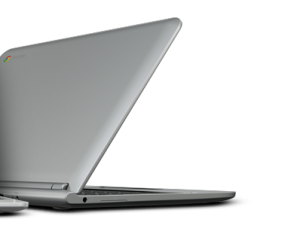The Basics of IP Addresses
The “IP” part of IP address stands for “Internet Protocol.” The “address” part refers to a unique number that gets linked to all online activity you do…somewhat like a return address on a letter you’d send out. (All this happens in milliseconds.)
That’s the end of today’s lesson. At least it should be.
Because from this point on, it gets complicated fast. And confusing. Information technology (IT) is crazy stuff and it’s best left to those who have to deal with computers and networks.
Still, we’re all on the Internet these days, and it seems we’re always connected through our personal computers, laptops or mobile devices. And every time you go on the Internet, an IP address is right there, working for you.
And with so much obscure information (and misinformation) out there about the IP address, it’s helpful to know the basics.
You’ve got connections.
Your computer is hooked up to the Internet, one way or the other. When you go online for email, to shop or chat, your request has to be sent out to the right destination, and the responses and information you want need to come back directly to you.
An IP address plays a significant role in that.
You and your computer actually connect to the Internet indirectly: You first connect to a network that is 1) connected to the Internet itself and 2) grants or gives you access to the Internet.
That network might be your Internet service provider (ISP) at home, or a company network at work, or a wireless network at a hotel or coffee shop when you’re on the road. But with millions of computers on the Internet, how can your single computer jump right in and get you your work or personal emails and more without any problems?
Protocols are Protocols
To make sure you can do your thing on the Internet, your computer’s networking software is hardwired to follow a list of built-in networking standards and rules (yes, protocols) to connect to Internet, and to swap information and data back and forth.
One of those networking protocols on your computer, the Internet Protocol, is responsible for addressing, delivering and routing your online requests precisely. It attaches an “electronic return address” to all your online requests and activity for you. The address it uses is the IP address for your connection.
So long, IP address. It was nice while it lasted.
When you’re at home, an IP address is assigned to your computer by your Internet service provider (think Time Warner Cable, Cox Communications, or AT&T). Since they are the ones giving you access to the Internet, it’s their role to assign an IP address to your computer. Your Internet activity goes through them, and they route it back to you, using your IP address.
But don’t get attached to it. Don’t tattoo your IP address to your arm, because it’s not really yours. Even at home it can change if you do something as simple as turn your modem or router on and off. Or you can contact your Internet service provider and they can change it for you.
You can’t take it with you.
Plus, if you go on vacation and take along your laptop, your home IP address doesn’t go with you. It can’t, because on vacation you’ll be using another network to connect to the Internet.
So, when you’re at a coffee shop in another city or state (or just down the road) and you’re using their WiFi to get your email, you’re using a different (and temporary) IP address, one assigned to your laptop on the fly by the ISP for that coffee shop’s Internet provider.
Same thing happens when you travel. As you move from the airport to your hotel to the local coffee house, your IP address will change each and every time.
But you don’t have to think about it at all, or open the hood of your computer and flip switches. It all happens thanks to the intelligent design behind the Internet, wireless networks and all those Internet Protocols your computer uses.
“One latte and an IP address to go, please.”
You can see all this for yourself. Next time you’re using your laptop at a library, work or the corner store, just click onwhatismyipaddress.com and check out the IP address you’re using.
And to learn a little more about IP addresses, read the other articles right here on this website.
Related Articles


